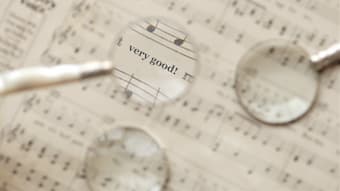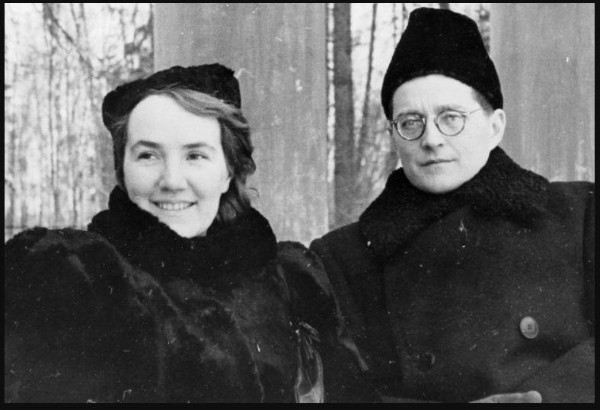While it’s true that good sight readers often have a solid technique to back themselves up, sight reading is a skill that needs care and attention in its own right. The method to improving sight reading is a long journey, beyond the scope of this article, but read on for some simple tips that should help to get you started.
1. Keep practicing
So the first tip isn’t sight-reading-specific, but I can’t overstate it enough: good sight reading comes from being as familiar as possible with your instrument. The better you know your way around your instrument, the more brain power you can dedicate to sight reading. You don’t want to be thinking about the fingering for a top F when you also have to process how loud to play it, how fast to play it, and how to articulate it.
2. Look at the basics
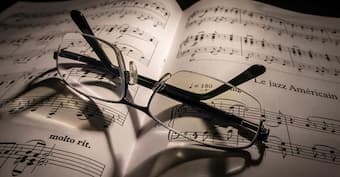
© musicindustryhowto.com
If you have an unfamiliar piece in front of you, before you even play a note, look at the big picture. What’s the time signature? What’s the key signature? The tempo marking? Dynamics? Once you have a general feel for what you’re aiming at, only then should you look at the notes.
Lots of people rush straight to the notes themselves, but not knowing how many sharps and flats there are supposed to be or getting the tempo wrong will only hold you back in the long run.
3. Go slowly
Especially in the early days of sight reading, give yourself time to process everything. Playing something a bit slower with more correct notes and dynamics is better than rushing through everything with a lower rate of accuracy. Sight reading is already tricky – don’t make it trickier than it has to be.
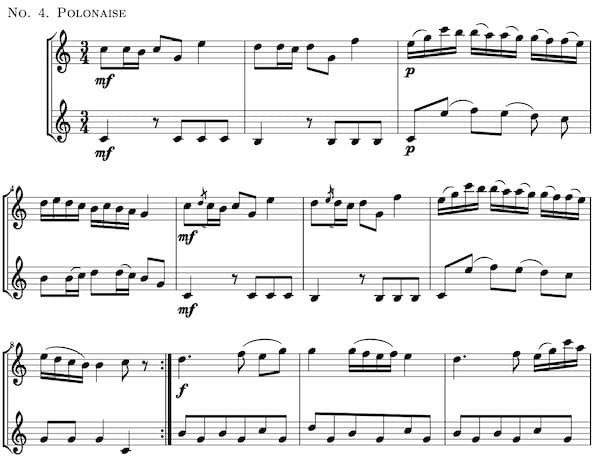
In this horn duet by Mozart, don’t be distracted by the scary semiquavers: look at the speed, the key signature,
and if there are any big changes in dynamics before getting on with the notes
Mozart: 12 Horn Duos, K. 487/496a – 4. Polonaise
4. Look ahead
When we sight read, we’re constantly looking ahead so we don’t get caught out; our eyes often aren’t on the notes we’re actually playing. This might sound like some horrible brain training memory exercise, but as much as possible, try to look ahead. The more you know your instrument, and the more you’ve practiced (see point 1), the easier this will be.
5. Keep going
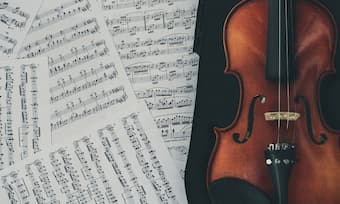
© kristinpfeiferyu.com
This may be a bit of a contentious one, and it can change depending on the circumstances, but overall, when you make a mistake I advise you to keep playing, no matter how many you make. I know, it’s painful to completely butcher a few bars and just steamroller ahead, but that’s what sight reading is: looking ahead. If you dwell too much on the thing that just happened that you can’t change, it will only take up valuable brain space for looking ahead, to a section that you can actually do something about.
Embrace the fact that mistakes will happen when you’re sight reading. You can definitely come back to them and practice them after the fact. I’m a big fan of normally ironing out lumps and bumps as I practice, so mistakes aren’t ingrained into my playing, but sight reading is about keeping going.
It’s also useful to know what kind of mistakes you make under pressure. Some people forget the key signature; for others, rests or note durations are the first things to go. Pay attention to the slips you make and use them to inform yourself and improve on the next attempt.
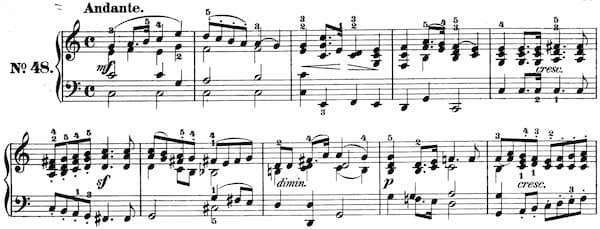
There are a couple of chromatic moments in this Song Without Words by Mendelssohn. It’s likely there may be some slip-ups…
but keep going and learn from where you made mistakes
Mendelssohn: Lieder ohne Worte, Book 8, Op. 102: No. 48 in C Major, Op. 102, No. 6
6. Enjoy it
Perhaps even more controversially, try and enjoy the experience of sight reading. It can be fairly excruciating at first, but the better you get at it, the more fun it becomes. I actually enjoyed learning to sight read, because it gave me sort of a free pass to make mistakes. Just like in regular practice, a mistake should be something that invites curiosity rather than criticism. Use your mistakes to change something for the better next time, and enjoy the process.
7. Remember why you’re doing it
Most of all, think about how great it would be to be able to play more and more complex things at first glance! The moment where you can take a piece of music you’re never seen before and play it on the first attempt really makes it worth it.
Sight reading has many benefits, and is an incredibly useful tool to have at our disposal. It will never replace proper practice – and of course, there are certain pieces that can’t (and shouldn’t) be sight read – but it can be a really fun and rewarding experience.
Did we miss any tips? Do you agree (or not) with the tips above? Let us know below!
For more of the best in classical music, sign up to our E-Newsletter


